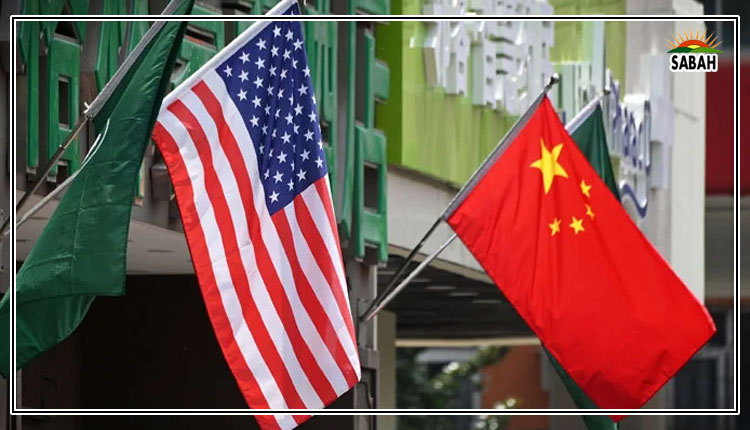The fragile balance of US-China trade … Yousuf Nazar
After decades of facilitating and even encouraging China’s rise, the dramatic shift by the US to a policy of containment could gather pace when Donald Trump takes over on January 20, 2025 as president.
The tensions marking the US-China relationship have generated a pessimistic, sometimes dire, vision for its future. Hostility has reached a level that makes war thinkable within the next decade. It has become difficult to imagine how Washington and Beijing might turn their relationship, which is so crucial to the future of world order, toward calmer waters. However, the hostility is likely to be constrained by their economic interdependence.
Trump’s incoming press secretary Karoline Leavitt confirmed last week that he had invited Chinese President Xi Jinping to the inauguration, but the risk levels for Xi accepting seem high. Observers indicate Xi may choose to decline the invitation even though Trump has signalled his willingness to work with China and acknowledge their shared interests. Xi’s participation could be perceived as conceding to the new US leadership, especially amid rising tariffs Trump has already threatened, which could reach as high as 60 per cent for Chinese imports.
However, President Xi Jinping has emphasised that China is prepared to stay in communication with the US to expand cooperation, manage differences, continue exploring the right way to get along with each other in the new era and realise long-term, peaceful coexistence to the benefit of the two countries and the world at large. Xi made the remarks on 10 December in a congratulatory letter to the 2024 Gala Dinner of the US-China Business Council, saying that: “We both stand to gain from cooperation and lose from confrontation. We should choose dialogue over confrontation and win-win cooperation over zero-sum games”.
American consumers could soon face higher prices for foreign-made goods if Trump carries out expected hikes in US import tariffs. Trump promised tariffs on all imports from 10-20 per cent, with a special rate of 60 per cent on all imports from China. Analysis of current trade flows and tariff rates shows that electronics and machinery will face the highest import tax burden if Trump implements the promised duty hikes. But will he?
Northwestern University’s Nancy Qian points out that it is not only China that will suffer if a new Trump administration imposes “sweeping tariffs” against the country. Such a policy, together with Trump’s other tax proposals, could cost Americans $500 billion per year, with the burden “borne disproportionately by lower-income households, which rely more on cheap imports”.
The economic relationship between China and the US has transformed over the past few decades, from minimal interaction to an increasingly intertwined and dependent one. Today, the two countries are the largest trading partners and major sources of foreign direct investment (FDI).
The economic partnership between the US and China has expanded significantly since China acceded to the World Trade Organization (WTO) in 2001. China’s transition from a closed economy to a global manufacturing powerhouse coincided with the US’s policy of engagement, resulting in a mutually beneficial relationship. As a result, China became integral to global supply chains, while the US capitalised on China’s low-cost production base.
By 2009, China overtook Japan as the US’s largest trading partner. This shift signified China’s rise as a key player in the global economy, while the US leveraged China’s manufacturing capacity to maintain its competitive edge in global markets. However, tensions in the trade relationship began to surface as both countries competed for dominance in emerging sectors such as technology, energy, and infrastructure.
In 2023, the total trade in goods and services between the US and China was approximately $750 billion. This marks a slight increase from the $690 billion recorded in 2022, as global trade has recovered from the disruptions caused by the Covid-19 pandemic. The US continues to import more from China than it exports, reinforcing the imbalance that has characterised their trade relationship for years.
The trade imbalance between the US and China remains a key issue in their economic relationship. In 2023, the US trade deficit with China was around $368 billion. This is a slight increase from the previous year, reflecting the ongoing trade imbalances. While the US imports a vast array of consumer goods from China – such as electronics, apparel, and machinery – its exports to China are more limited in comparison. The US mainly exports agricultural products, aircraft, and high-tech goods.
The US-China trade deficit is a persistent point of contention in American political discourse, with critics claiming that it contributes to the loss of US manufacturing jobs. However, supporters argue that the deficit is a natural consequence of the global supply chain and the growing consumer demand in China.
The composition of US-China trade highlights the disparity in their economic structures. In 2023, American exports to China were valued at approximately $177 billion, while US imports from China amounted to $545 billion. The US continues to have a significant services trade surplus with China, exporting about $74 billion in services such as financial, intellectual property, and professional services in 2023, while China exported $20 billion in services to the US.
US imports from China are heavily concentrated in consumer electronics, machinery, and textiles. For example, China is a key supplier of smartphones, computers, and televisions to the US. These goods are integral to the American consumer market, making it difficult to rapidly reduce the trade deficit despite the implementation of tariffs.
As of 2023, the US continues to be a leading source of foreign direct investment (FDI) in China. In 2022, US FDI in China amounted to approximately $120 billion, marking a slight increase from $114 billion in 2021. The major sectors attracting American investment include technology, manufacturing, and services, particularly financial services, consumer goods, and healthcare.
American companies like Apple, General Motors, and Intel remain deeply embedded in China’s supply chains. However, there have been growing concerns regarding intellectual property theft, regulatory barriers, and shifting political landscapes, which have led to a more cautious approach to investment in China in recent years.
Chinese FDI in the US has seen a decline in recent years. In 2023, Chinese FDI in the US was estimated at approximately $4.5 billion, down significantly from $14 billion in 2016 and well below the peak levels seen during the early 2010s. This decline is partly due to increased scrutiny by US regulators over national security risks, especially in sectors like technology, telecommunications, and infrastructure.
Chinese investments in the US are now more concentrated in real estate, technology startups, and renewable energy projects, with a focus on acquiring strategic assets rather than broad portfolio investments. Geopolitical tensions and trade policies have also contributed to the slowdown in Chinese investments, as the US government has imposed stricter regulations on Chinese companies attempting to acquire American firms, especially in sectors deemed sensitive to national security.
The US-China economic relationship has become increasingly complex, with geopolitical tensions influencing trade and investment flows. The trade war between the two nations, initiated in 2018, has had lasting effects on the bilateral economic relationship. While some tariffs were rolled back in 2020 during trade negotiations, the two countries have continued to engage in economic rivalry, particularly in high-tech sectors.
Concerns over China’s technological ambitions, especially in areas like artificial intelligence (AI), semiconductors, and 5G networks, have led to increased US restrictions on Chinese companies. For instance, the US government has placed sanctions on major Chinese tech firms like Huawei and SMIC. This has contributed to a process of ‘economic decoupling’ in certain sectors, with both countries working to reduce their reliance on each other for critical technologies.
The Covid-19 pandemic revealed the vulnerabilities in global supply chains, particularly American reliance on Chinese manufacturing. This has led to efforts by the US to diversify its supply chains and reduce dependence on China for critical goods such as pharmaceuticals and electronics.
The future of the US-China economic relationship is marked by cooperation as well as competition. While both countries remain deeply interdependent, the growing geopolitical rivalry and competition in emerging technologies will likely drive a decoupling in specific sectors. The US is focusing on reducing its reliance on Chinese technology, particularly in critical areas like semiconductors and 5G, while China is striving to achieve greater technological self-reliance.
The ongoing trade imbalance, particularly in goods, is unlikely to change drastically in the near term, as both nations continue to benefit from the existing trade patterns. However, future trade negotiations may focus more on services and high-tech industries, where the U. has a comparative advantage.
The economic interdependence between China and the US remains central to the global economy. Their trade relationship, though unbalanced, continues to provide significant benefits to both parties. The US continues to be a major market for Chinese goods, while China remains a key destination for American exports and investments. That said, geopolitical tensions, technological competition and the evolving global landscape suggest that the future of this economic partnership will be shaped by cooperation as well as rivalry.












